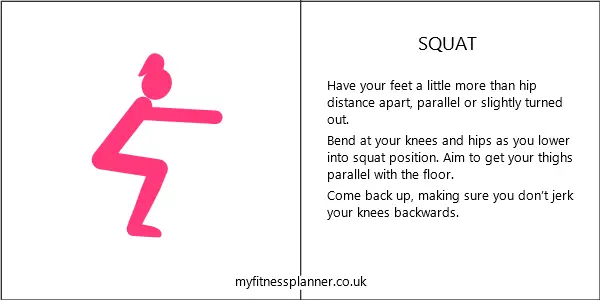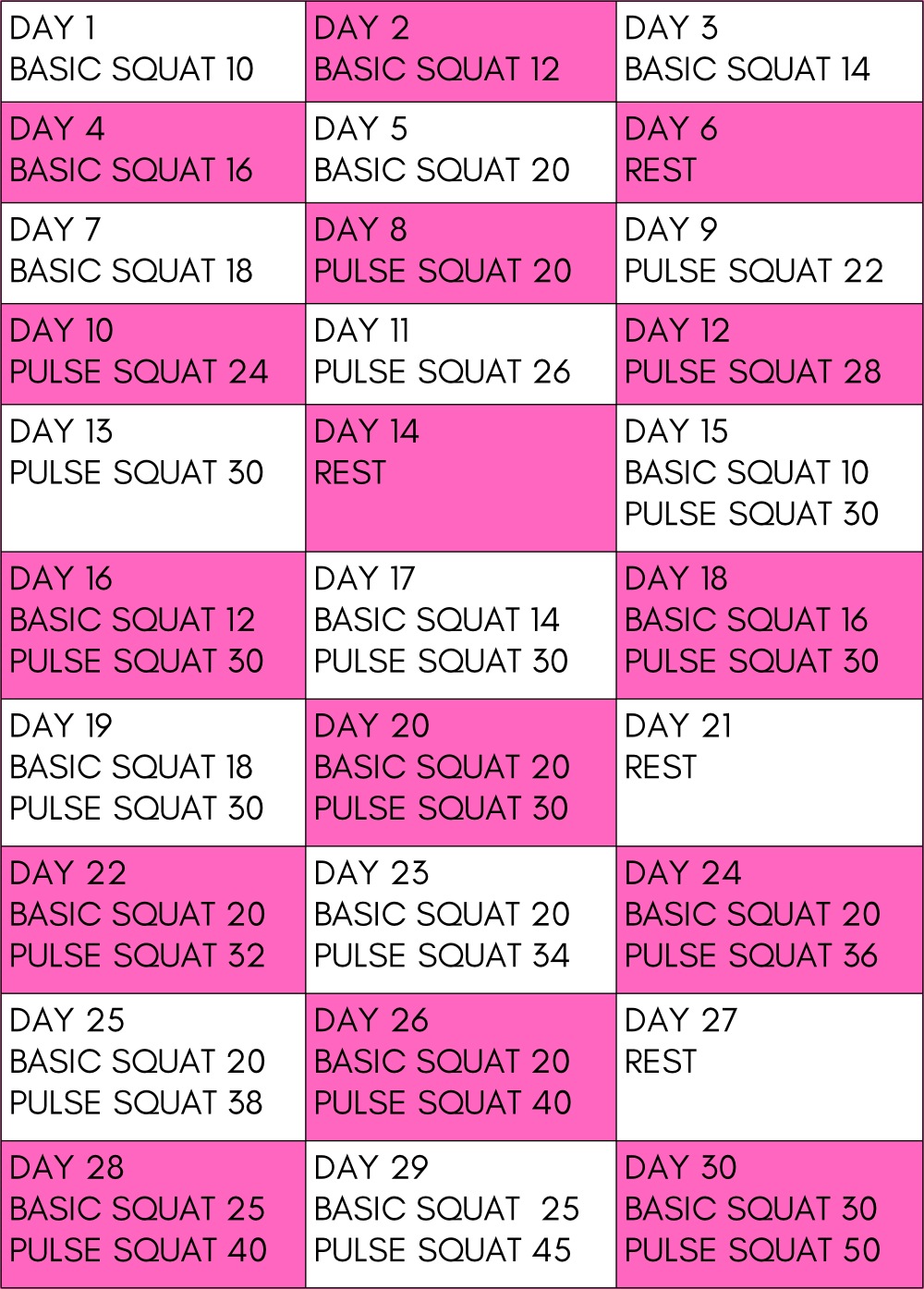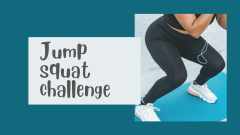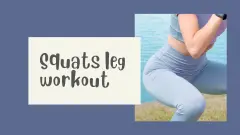Improve tone in all your leg muscles with this squat pulses exercise challenge. Squats are one of the best exercises for working the whole leg. This challenge uses a mixture of basic squats and pulsing squats, to increase the challenge and make your muscles work in different ways. In the pulse squats you only move through a range of 1-2 inches from the lowest position. After a few reps, you’ll really start to feel your muscles working.
About this squat pulses challenge
This is a 30 day challenge and, like most challenge type workouts, there is a little bit of progression each day. You start off with just 10 regular squats and add to this each day, ending with 30 regular squats and 50 pulsing squats. Anyone in good health should be able to do this challenge, but please read these general exercise guidelines before starting, and make sure you follow the instructions below for correct technique. The time needed for the workout will increase as the challenge progresses, but even on day 30 it should take less than 5 minutes. All you need to do the workout is comfortable clothing and, if you’re working on a hard floor, non-slip footwear (or bare feet).
How to squat

What if you can’t get your thighs parallel to the floor?
Not everyone can squat this deep, while on the other hand some people can squat much deeper. If you can’t get your thighs parallel to the floor, just go as low as you comfortably can. In the short term, it may help to take your legs a little wider and turn your feet out slightly. Alternatively, you could try raising your heels slightly. For this you need to have your heels on something about half and inch thick, solid and non-slip. To improve your squatting depth in the long term you need to practice and to improve your calf and hamstring flexibility. You can see calf and hamstring stretches here.
Squatting further than thighs parallel
Deep squatting is one of those topics that there is no clear consensus on. Some advise against it, due to increased load on the knee ligaments. Others say it’s perfectly safe if you have good joints and that deep squatting is a very natural position, so why shouldn’t we do it? While it’s true that it’s a natural position and one that is very common in some parts of the world, in Western cultures we’ve stopped doing it in everyday life. Taking up deep squatting as an adult may well cause knee problems, so is probably best avoided as you can have a perfectly good leg workout by squatting to parallel.
Squat pulses
- Take the squat to the lowest position, then pulse 1-2 inches up and down from here.
Warming up
Although this isn’t a particularly high intensity exercise and the squat movement is one that we use frequently in everyday life, it’s better not to just go straight into squatting right down. Warming up muscles and joints for exercise allows them to work better and be less likely to get injured. Before each day’s routine, do 10 warm up squats, starting with squatting halfway and working up to a full squat. Learn more about warming up here.
Challenge reps chart
These are the reps for each day

Related to squat pulses exercise challenge
Challenge FAQs
The first day of the challenge should feel like it needs a bit of effort, but not too much. If you really struggle with day 1, then you probably won’t get through the challenge. The idea with the challenges on this site is that the first few days get you used to the exercises and the daily habit. Usually about halfway through the challenge the effort levels start to increase more quickly.
Avoid challenges that increase effort levels very quickly – they’re simply not realistic. It’s unlikely that, for example, you would be able to increase how many squats you are able to do by 10 a day for 30 days, or increase your plank hold time by 10 seconds a day for 30 days.
In general, allowing muscles 48 hours between workouts is good because it gives our bodies time to recover and adapt. Challenges are generally short workouts and for a limited period of time (usually 30 days), so not having many rest days won’t be a problem. With challenges that alternate exercises each day, it’s not an issue, because you’re using different muscles.
Fitness improvements don’t always happen in a predictable way. Sometimes we’re just not as strong or energetic for no apparent reason, or we hit a plateau. If you get to a point where you’re struggling to complete the day’s challenge, you can try one of the following:
- Take a couple of days off and start again where you left off
- Do the challenge on alternate days rather than every day
- Instead of increasing the effort every day, stay at the same level for 2 or 3 days and then go onto the next day of the challenge
Obviously these solutions mean the challenge will last longer, but you’ll still benefit from doing it.

